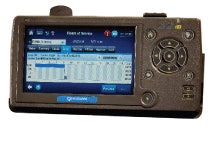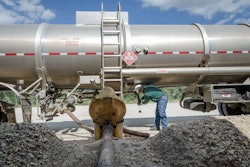
Carriers can expect a proposed rule on electronic onboard recorders as early as March, said Dave Kraft, director of industry affairs for Qualcomm.
During an Aug. 16 webinar, Kraft said that a rule would follow the Congressional mandate in the MAP-21 highway bill, passed in June. The bill directed the Federal Motor Carrier Safety Administration to require all interstate truck and bus carriers to utilize the devices for hours of service recording.
In an Aug. 3 Federal Register notice, FMCSA announced that its Motor Carrier Safety Advisory Committee will hear from the agency on major motor carrier safety provisions included in the MAP-21 highway bill on the first day of the next public MCSAC meeting, Aug. 27-29 in Alexandria, Va.
Among those provisions, the most controversial has been the EOBR mandate. The MCSAC has addressed EOBRs within the past year, offering recommendations late last year on device technical standards, then taking up the subject of the devices and harassment this past February, where some committee members continued to object to certain aspects of the recommendations, such as the requirement for location tracking and the coupling of what some considered fleet-management tools in baseline specs.

Kraft, a member of MCSAC’s EOBR Subcommittee, nonetheless expected those technical recommendations to give FMCSA “a running start” on what much of any EOBR rulemaking will be devoted to — standards for data transfer and security, accuracy, and portability for law enforcement purposes. “FMCSA’s been working on EOBR rulemaking for a while,” Kraft said. “They’re well downstream in getting this developed.”
As part of the Wednesday webinar, billed as an “Update on the upcoming EOBR mandate and its impact,” Kraft also addressed:
- Legal/legislative challenges: “There is always a potential for litigation and legislative challenges,” Kraft said. He noted the House transportation appropriations bill, shelved in favor of a continuing resolution to extend government funding through March. It included the so-called Landry-Rahall amendment, which would have blocked funding of FMCSA work on EOBRs, Kraft noted. “The next Congress will deal with it in March.”
- Implementation: Though MAP-21 directed FMCSA to issue a final rule one year from the bill becoming law, or Oct. 1, 2013, “given the depth and complexity of it,” Kraft said, “it’s important that we do have a proposed rule…. Then we’ll have that comment period. FMCSA is obligated to evaluate all of the comments, then provide feedback and make revisions for a final rule,” which is followed by a three-month White House review. “When you add all of those things up,” Kraft estimated, “we’re looking at a final rule in mid-2014.”
- Effective date v. compliance date: The former, Kraft noted, refers to when the regulatory work is done and when carriers and owner-operators “can implement, but it’s still optional.” On the compliance date, Kraft suspected “something reasonable” in terms of a window between the two dates to allow the 3.4 million trucks that would be affected to be outfitted. For carriers and owner-operators already utilizing various versions of electronic logs, Kraft expected FMCSA to allow for continued use of legacy systems, at the least for a specified time period. He expected ultimately a certification registry for approved devices to give users clarity of device compliance.










